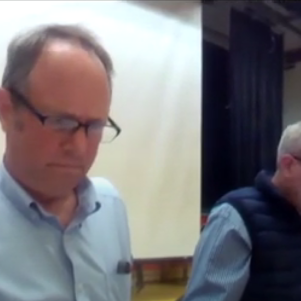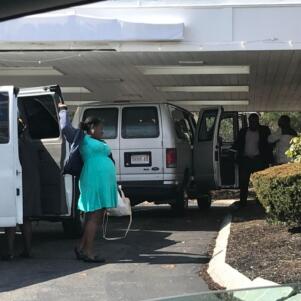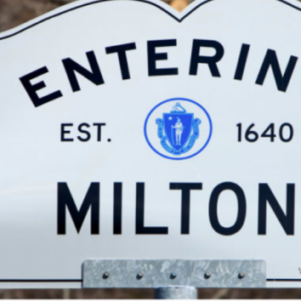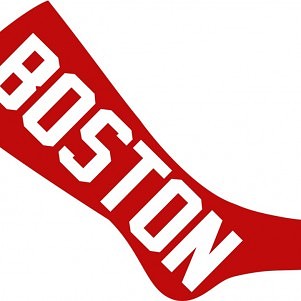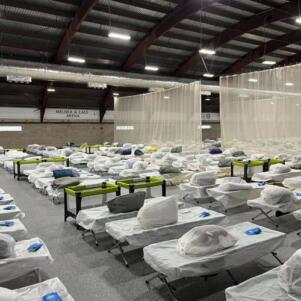Even when local, the past is a foreign country
By Alexandra McCleary | May 6, 2016, 6:32 EDT
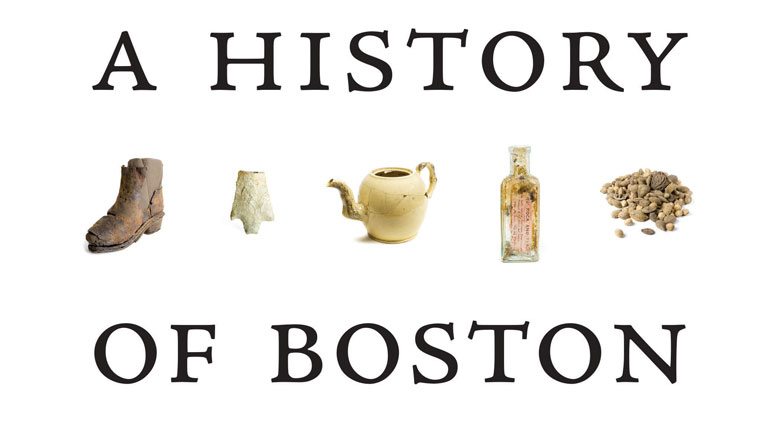 (Credit: Joseph Bagley, UPNE Press)
(Credit: Joseph Bagley, UPNE Press) In what is sure to be a treat for all New England history buffs, Boston City Archaeologist Joseph Bagley recently published A History of Boston in 50 Artifacts. Bagley curated the artifacts from archaeological sites ranging from pre-contact Mattapan fish weirs to Boston’s red light district, “the Combat Zone,” circa 1980.
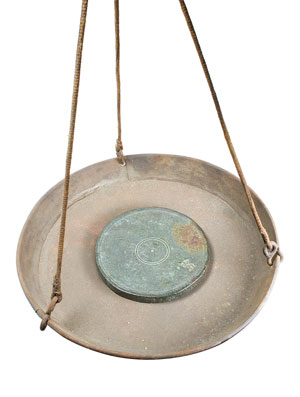
Trade weight for use in balance scales. (Credit: Joseph Bagley, UPNE Press)
The volume is an attractive compilation of short, image-laden articles. It combines the appeal of “listicles” used in online journalistic publications such as Buzzfeed, with object biographies that were popularized in Mark Kurlansky’s works, Salt and Cod. Bagley’s book has obvious structural similarities to the Smithsonian’s publication, History of America in 101 Objects (2013). In fact, Bagley cites the British Museum’s History of the World in 100 Objects (2010), originally a radio series, as the inspiration behind his own work.
Compared with these two works, Bagley’s 50 artifacts seems a reasonable proportion for a city of Boston’s size. The other books’ numbers are so close that they appear to compete with one another. Which is more bold? The country that presumes to summarize the history of the world in 100 objects, or the country who insists its own history can be told in 100+1 objects?
In any case, the popularity of this genre of history writing is understandable: it is eminently readable, while still a reliable source of information. It is also a refreshing alternative to the alien-civilization drivel that has blighted archaeology in the popular media for some time. Not only does Bagley do a fine job in his work, but he also plays an important role as a City Archaeologist for the people. Like many scientists, archaeologists have struggled to control the public discourse surrounding their field, and are largely unsuccessful in their attempts to capture the public’s imagination in a meaningful way. Fortunately, Bagley chooses not to mimic the remote, highly technical writing style of many of his colleagues. Instead, he opts to simply write how they speak, using a tone that is at times wry and witty, while demonstrating superior deductive skills and rousing the public to see the value of their past around them.

Soldering iron 1730-1760 John Carnes Site, North End. (Credit: Joseph Bagley, UPNE Press)
The objects in the Smithsonian book function as metonyms for iconic events in American history: Neil Armstrong’s space suit, for example, or the Star-Spangled Banner. To a large extent, these objects represent a very conscious and deliberate construction of a national narrative highlighting American civic virtues, particularly those related to discovery and innovation.
Contrast these items with those in Bagley’s curation, most of which were everyday objects long since forgotten. More often than not, they were unceremoniously discarded in privies. Even when they date to crucial eras in our nation’s history, many of the archaeological sites featured in Bagley’s book might never have been excavated had they not been found in urban development projects that were legally obliged to hire archaeologists. Most builders are required to employ experts to identify, protect, and salvage sites of historical importance before they can develop them.
Bagley makes full use of many such artifacts to enlighten us about features of everyday life that are often not recorded in history books. For instance, he uses lice combs and preserved parasite eggs to talk about public health in 18th century Boston. Other examples include cat skeletons and grotesque pottery, which indicate the persistence of superstition long after the infamous Salem Witch Trials.
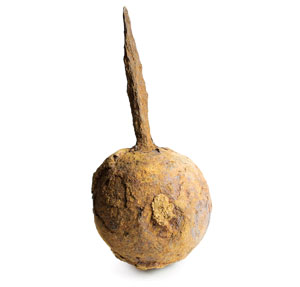
Bar shot June 17, 1775 City Square, Charlestown. (Credit: Joseph Bagley, UPNE Press)
The author’s dedication to public outreach is also demonstrated by his condition that all sales proceeds of A History of Boston in 50 Artifacts go directly to the City Archaeology Program. As a former volunteer at the Boston City Archaeology Lab, I would strongly recommend both the book and getting involved in what is perhaps one of Our Fair City’s least appreciated cultural resources. But beware: prolonged exposure to the program may lead to the pursuit of archaeology as a career option.
Alexandra McCleary is a doctoral student in archaeology.

